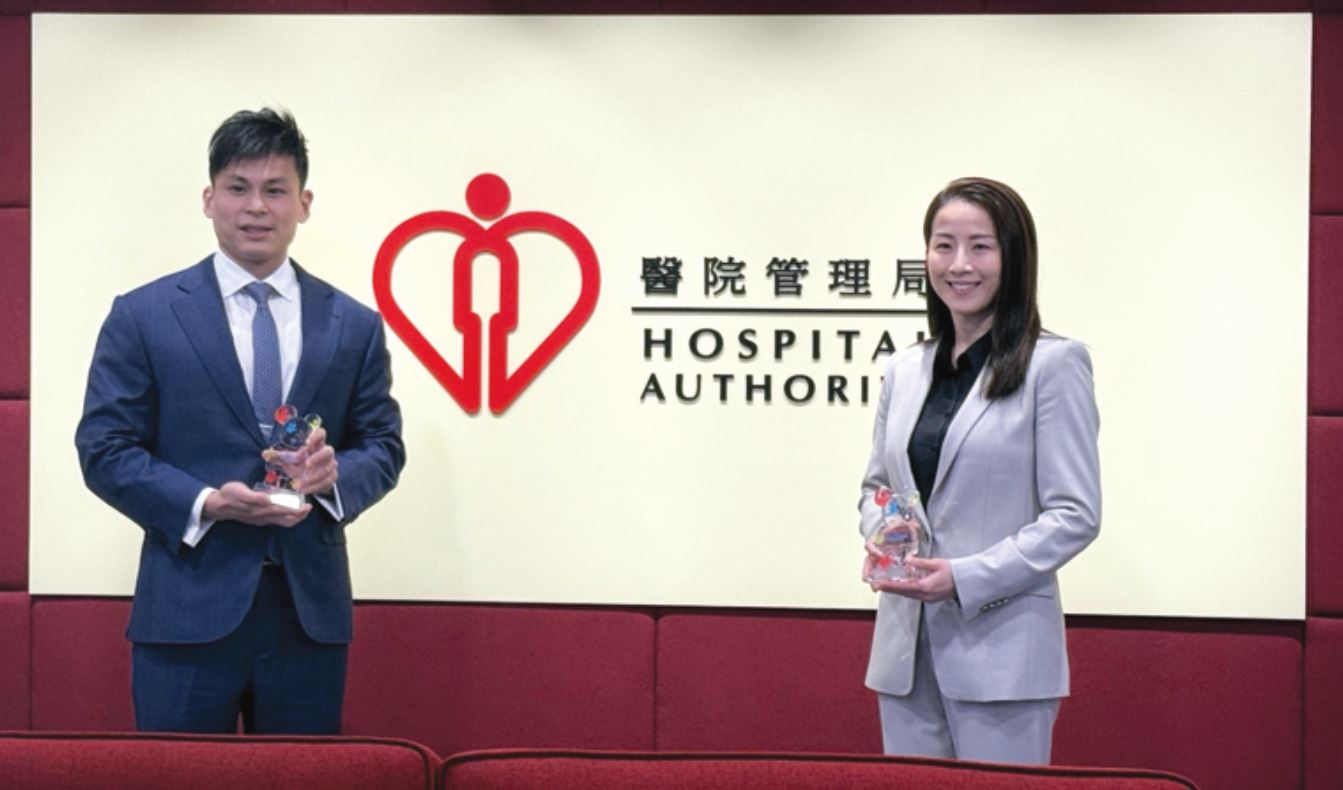
Representatives of Hong Kong’s young doctors have described working in the city’s public hospitals as a “profound privilege” with “critical edges” that allow them to access a prodigious medical database for identifying treatment gaps and improving care for the underprivileged.
However, they said there are still hurdles to overcome in integrating established medical innovations from the Chinese mainland and abroad into Hong Kong’s public medical system, and that enhanced exchanges and learning opportunities will benefit local patients.
The medics made the remarks ahead of upcoming celebrations to mark the nation’s Doctors’ Day on Aug 19.
Luke Chan Ka-lok, an associate consultant for medicine and geriatrics at Princess Margaret Hospital, and Gloria Lam Yan-ting, an associate consultant for orthopaedics and traumatology at Alice Ho Miu Ling Nethersole Hospital, who both received this year’s Young Achiever Award, were invited by the Hospital Authority — the award’s organizer — to share their frontline medical experiences and research insights recently with reporters.
Chan, whose research contributed greatly to establishing the Kowloon West Cluster’s Non-Transfusion-Dependent Thalassemia complications screening service, credited his lead to having been allowed access to the public medical system’s archival health care database, which, he says, goes wider in scale and scope than that of the city’s private sector.
His analysis of the data revealed high chances of a liver iron overload among NTDT cases — standing at 30 percent — severe fibrosis and cirrhosis at 11 percent, and doubled diabetes risk among thalassemia patients. The findings are largely left hidden worldwide, he stressed, due to the disease’s prevalence in less affluent regions.
“Screening is now regular in Kowloon West,” Chan said, revealing that severe medical complications, including liver cancer, had been detected early in more than 100 patients as a result.
While Hong Kong’s public hospitals offer rich research soil, integrating external medical advances faces friction.
An example Lam mentioned is her journey of promoting the muscle-sparing direct anterior hip approach for total hip replacements — a rather common surgical procedure overseas, but currently applied in less than 5 to 10 percent of cases in Hong Kong’s public hospitals.
Compared to the posterolateral approach, which has been widely adopted in Hong Kong, the direct anterior hip method is said to enable higher artificial joint stability with fewer postoperative activity restrictions.
“The main difficulty is that when we received our training since day one in medical school, we have been exposed to the posterolateral approach only. We haven’t been exposed to other approaches,” Lam said. “As doctors, we tend to stay on the safe side because that’s what we know we’ve been trained for.”
She said coordinating with new instrument setups and team workflows after returning from outside training presented the “most difficult” challenges for her, as tackling it requires the entire surgical team’s concerted commitment — from nurses to trainee doctors.
“There are some obstacles to stepping out of the comfort zone. But, foreseeing the future, I think it’s going to change slightly,” said Lam, noting that more than 50 doctors have signed up for the upcoming DAA workshop later this month.
Chan said he too had run into occasional roadblocks on the way to innovations, especially the new thalassemia treatment methods developed by his mainland peers.
“I very much hope for opportunities to learn more about them on the mainland and bring (treatments) back to serve Hong Kong patients,” he said.
READ MORE: Doctors to hold hospital, medical school jobs by ‘dual-track’ pathway
For Chan and Lam, a wider socioeconomic range of patients at public hospitals had significantly shaped research and clinical hard lines in the public health sector.
Chan underlined encounters and strong bonds with underprivileged patients as a key drive that propels him to keep hoping to hone his medical skills.
Recalling a young leukemia patient’s heartwarming gratitude, Chan said: “Although heavy patient flows could make care often seem systematic, it’s clear that patients see doctors and nurses as friends during treatment. We leave a lasting impact (on the patients and their families).”


